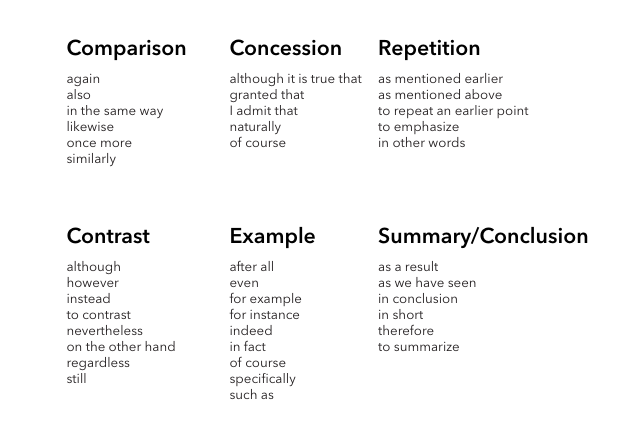Transition words in sentences and phrases are meant to increase the readability and flow of the text. They connect one idea to another using punctuation marks like semi-colons, periods, and commas based on placement. Thesis transition words are positioned at the start of paragraphs, sentences, and independent clauses to show a particular connection between sets of ideas and improve cohesion and logic for the readers.
In this article, we will guide you on the different types of transitions and how to use those transition words while writing your thesis. While a thesis can be a dull paper that may exhaust the reader’s energy, using thesis transition words will bring flow and relationship between ideas, making it less tedious and easy for the reader to understand.
Sometimes, students need more time or become busy with other academic obligations, which may need help meeting deadlines. If you feel stuck and fear not submitting your assignment promptly, remember that seeking thesis writing help from a reputed platform is relieving. Experts are efficient and meet the quality standards of academic writing.
What Are Transition Words?

Words that make your writing smoother and transit from one topic to another in a flow without problematizing the reader’s understanding. Words like “in addition, furthermore, for that reason, and in conclusion.” signals the shift in the topic.
Thesis transition words present opposing or new ideas and cause-and-effect connections between different topics within the thesis.
Types of Transition Words
There are four primary categories of transition words:
- Adversative transitions
- Causal transitions
- Additive transitions
- Sequential transitions
Each category has specific sub-categories and thesis transition words. But remember, it’s not as simple as it seems; words with the same meaning cannot be interchanged. So, you need to be careful while using transitions. It is better to understand the transition types and their usage.
Tips for Using Transition Words in Your Thesis
Transition words are crucial to bringing flow and logic into your writing, but it’s essential to be mindful of their usage. Overusing them may dilute the impact of your thesis, so use them judiciously and responsibly, ensuring that each transition word enhances the clarity and coherence of your thesis.
Additive Transition Words

Additive transition words are used where you need to present new information or examples. You can use these transition words throughout the content to extend the previously discussed information and add supporting evidence. You can use these thesis transition words to persist with the idea without simulating the sentence structure.
Here are the sub-categories of additive transition words:
- Transition words for Addition (for instance, especially, such as, in particular, like, notably)
- For references (considering, as for, on the subject of, and in regard to)
- For Similarity (in like manner, in the same way, likewise, similarly, by the same token, and equally)
- For clarifications (specifically, in other words, this is to say, more precisely, and namely)
Adversative Transition Words
These types of transition words are used to show some kind of contrast. These words are used to present information that contradicts or differs from the prior text.
Here are the sub-categories of adversative transition words:
- Replacement (instead, if not, (or) at least, or (perhaps), and (or) rather)
- Dismissal (either way, at any rate, whatever the case, in any/either case)
- Emphasis (indeed, above all)
- Conflict (by way of contrast, on the other hand, in contrast, although conversely)
- Concession (nonetheless, admittedly, regardless of, even though, even so)
If you lack other writing skills apart from thesis transition words, you should not risk your important assignment. You should hire a professional thesis writer for your paper, as this is the document on which your degree is based.
Causal transition words

We use Causal transition words to express the cause-and-effect connection between two paragraphs or sentences. These transition words are used to demonstrate the condition, consequences, and purpose.
Here are the sub-categories of causal transition words:
- Consequence (because of, for this reason, consequently, due to (the fact that), under the/such circumstances)
- Purpose (to the end that, in order to, with this in mind, to ensure (that), for the purpose of, lest)
- Condition (in the event that, provided, in case, being that, inasmuch, if so/not)
Sequential transition words
Sequential thesis transition words show a sequence. Whether it’s the chronological order of the events or the order in which they are presented in the text, they are used for signposting in academics.
Here are the sub-categories of sequential transition words:
- Conclusion (as a final point, last but not least, to conclude)
- Resumption (to resume, to return)
- Initiation (initially, to begin with)
- Enumeration (firstly, secondly, thirdly)
- Continuation (subsequently, eventually, afterward)
- Summation (as previously mentioned, as has been mentioned, altogether, as I have argued, given these points)
What Are the Linking Words in a Thesis?

Linking thesis transition words connects one main idea to another; a semi-colon or full stop usually separates them. But if it comes at the sentence’s start, it must be followed by a comma.
- Alternatives
- by contrast, whereas in comparison, another view is conversely.
- Additional ideas
- correspondingly, further, furthermore; again; additionally, moreover, then, besides, similarly, also.
- Analysing results
- evidence illustrates that the author (year) suggests that, this suggests that, consequently, thus, resulting from; because of this; hence, otherwise; in that case; that implies; therefore, accordingly, as a result of, it can be seen, owing to x.
- Cause / Reason
- because, as a result of
- Introducing examples
- for instance, particularly, namely, such as, as exemplified by, such as including, as follows, especially, notably, mainly, Re-phrasing, for example, in particular.
How to Choose Transitions in Academic Writing
Transitions are not remarkable components in writing, but they are powerful enough to be manipulated or misused when you are not careful.
Here are some practices for using thesis transition words effectively.
- Check if you have overused them or find them awkwardly used or lacking transitions. While the right use of transition is important, ensure you do not spend all your time finding the right transitions while writing your thesis.
- Wherever you find a suitable place to use a transition, build relations, and make your point easy for the reader to understand.
- Read the start of each paragraph if you haven’t used a transition, skim through the information that paragraph provides, and if that information connects with the previous paragraph, use a suitable transition there.
- Furthermore, check your paper’s structure to ensure that your ideas are coherent and in order. Find suitable thesis transition words to incorporate into your content to make it more logically structured.
How Do You Transition from a Quote to a Thesis?
To transition from quotes back to your thesis, you should first use a transitional phrase (furthermore, in addition). However, ensure you provide the quote’s context first, including who said this and where.
Thesis Transition Words Examples

These are the commonly used transition words in the thesis by Azusa Pacific University to help you choose better transitions for your thesis.
Conclusion
To wrap up, there are different types of transition words. They have the same meaning, but their usage differs based on the situation. So, students have to be careful while choosing which transitions to use in sentences and paragraphs and which ones to prefer in the conclusion.
In this article, we have gathered some thesis transition words and categorized them situation-wise, such as which words you can use to convey which idea. But if you do not have time to master these transitional words, you can acquire thesis writing services from a reputed platform. Professionals understand the rules better and provide quality content promptly.

